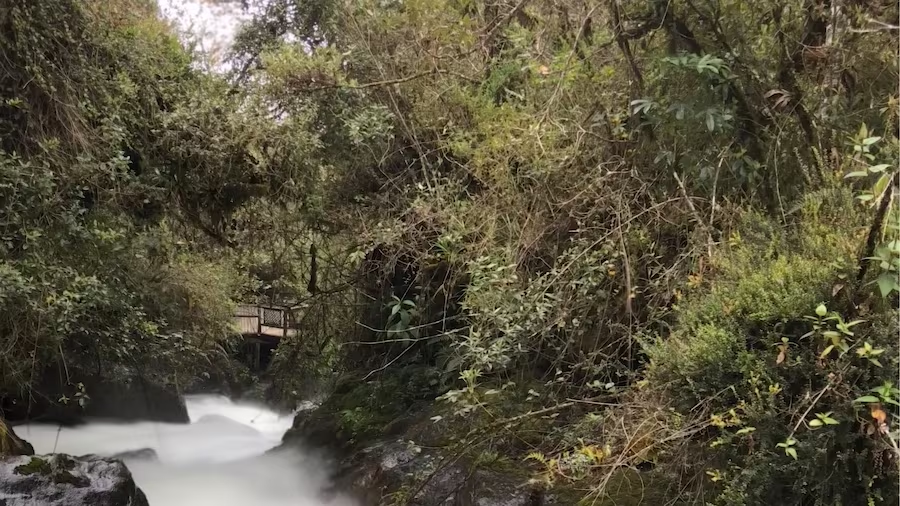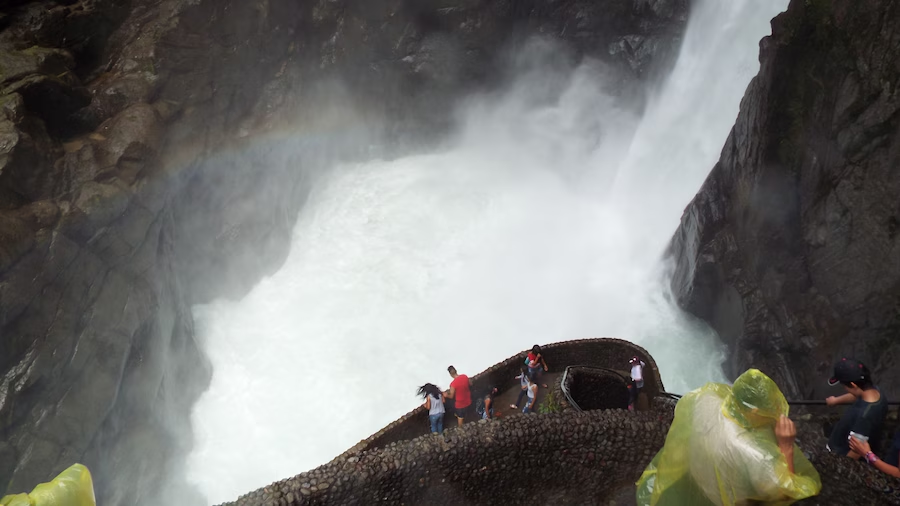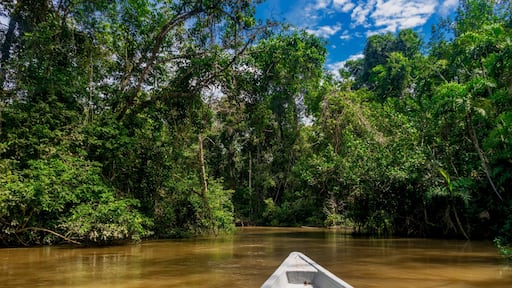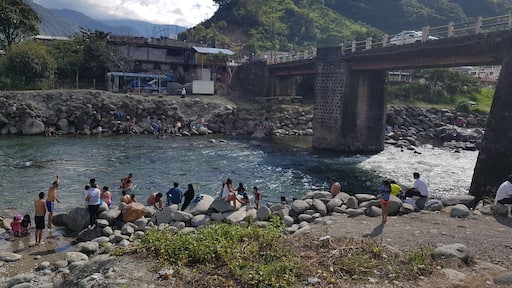Enjoy up-close encounters with centuries-old tribes and exotic animals while exploring a biodiverse region of Ecuador made up of dry landscapes and lush wetlands.
A vast wilderness of unblemished tropical landscapes and immense biodiversity await in the Ecuadorian Amazon. This remote eastern region of Ecuador is where indigenous cultures live alongside a wealth of curious and colorful creatures. Witness the lifestyles of Andoa, Cofan, Huaorani, Kichwa and Zapara people, among others, who live amid the natural beauty of the crystalline rivers, dense jungles and forests of the Ecuadorian Amazon. Spot colorful flora and fauna at national parks and on treks.
Lago Agrio (or Nueva Loja), the capital of the Sucumbíos Province, is the region’s northernmost tourist center. Travel by canoe in the Cuyabeno Wildlife Reserve, a mystical flood forest home to anaconda, dolphin and manatee. Limoncocha National Biological Reserve has beaches, rainforests and swamps set around a lagoon in the Napo River. Snap photos of black caiman, meet members of the Kichwa community and sample cassava with yucca tortillas.
In Coca (or Puerta Francisco de Orellana), the Museo MACCO has archaeological artifacts that explain the connection between humankind and the Amazon rainforest. This is the gateway to boating and hiking excursions in the UNESCO-listed Yasuni National Park. Sheltering around 600 bird species, over 150 varieties of mammals and thousands of plant species, it’s one of the most biodiverse places on the planet.
Join thrill-seekers in Tena for white-water rafting adventures on the Anzu and Jatunyacu rivers. Educational tours operate in nearby Jatun Sacha Biological Reserve. Discover caves, cloud forests, mountain plateaus and views of Sumaco Volcano in Sumaco Napo-Galeras National Park. Relax on the river beach of Misahuallí, where monkeys roam freely through the town’s streets.
Puyo, in the south of the region, is home to the Etnobotánico Omaere Park. Spend an afternoon birdwatching, browsing medicinal plants and watching traditional dance performances by the Huaorani people. Toward the region’s northwestern corner, San Rafael Waterfall is a photographer’s dream.
Buses travel regularly from Quito to Lago Agrio, Coca and Tena. Flights also operate between Ecuador’s capital and Coca. Rain is common year round in the Ecuadorian Amazon with December through March being the drier months.














